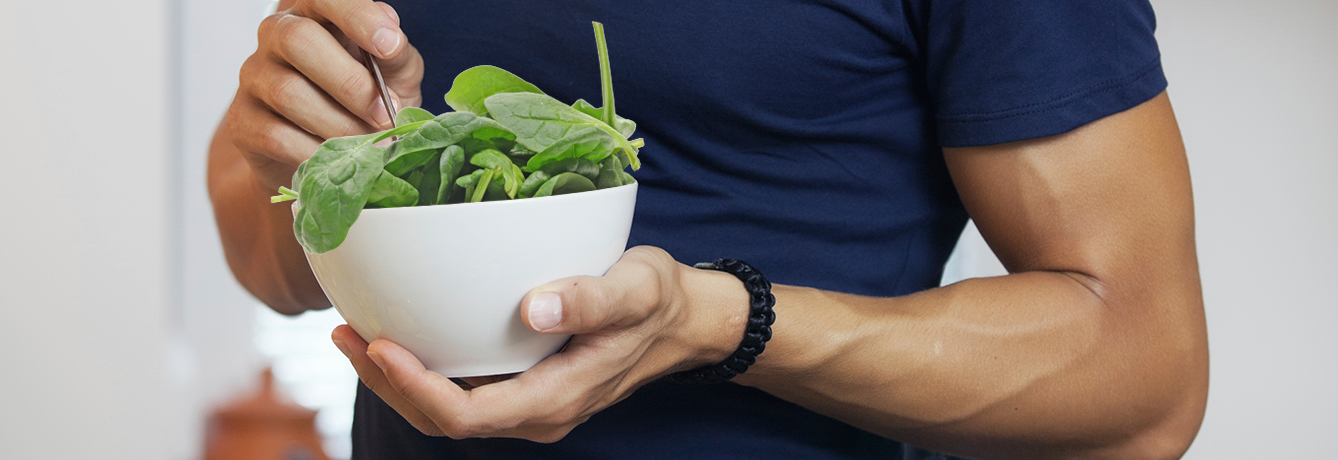At a time when professional athletes are getting booed for steroid use, spinach is in the news for its steroid-like ability to bulk up muscles. Lab tissue culture and animal studies showed that a plant steroid extracted from spinach increased muscle growth by 20%, and also enhanced rats’ front limb strength by 10%.” Some may scoff at the notion that spinach, despite containing nutrients, builds muscles, but Popeye may have been on to something,” says one of the study authors, Professor Mary Ann Lila, who holds the David H.Murdock Chair for Nutrition at North Carolina State University.
A caveat is that in order to replicate the effect in the study, you’d have to eat about 2.2 pounds of spinach. We juiced that amount here at the Dole Nutrition Institute, and it yielded about 13 oz.of spinach juice; manageable, but still quite a mouthful. On the other hand, spinach is packed with so many other powerful nutrients and antioxidants — not just the “phytosteroids” — that even a few servings a week will offer a variety of health benefits. For example, research suggests spinach may help protect against cancers of the liver, lungs, ovaries, colon and prostate.
Another study suggested that it might help delay the onset of dementia later in life. Spinach also could play a role in preventing age-related macular degeneration, the leading cause of blindness in people over 60. Our own lab tests comparing spinach to wheatgrass juice, found that spinach juice has twice the chlorophyl, eight times the calcium, six times the magnesium, 10 times the potassium, 15 times the vitamin C and 43 times the vitamin A! Try your spinach juiced, sauteed, tossed in a salad, pureed in soup or even made into pesto, as featured in this issue’s recipe corner.
Bonus: Lifting weights helps maintain muscle mass, particularly when dieting. Plus vigorous aerobic exercise can naturally boost levels of human growth hormone by 80%.
Published April 1, 2009



